Will Chinese Fighters Soon Take On a New Nuclear Role?
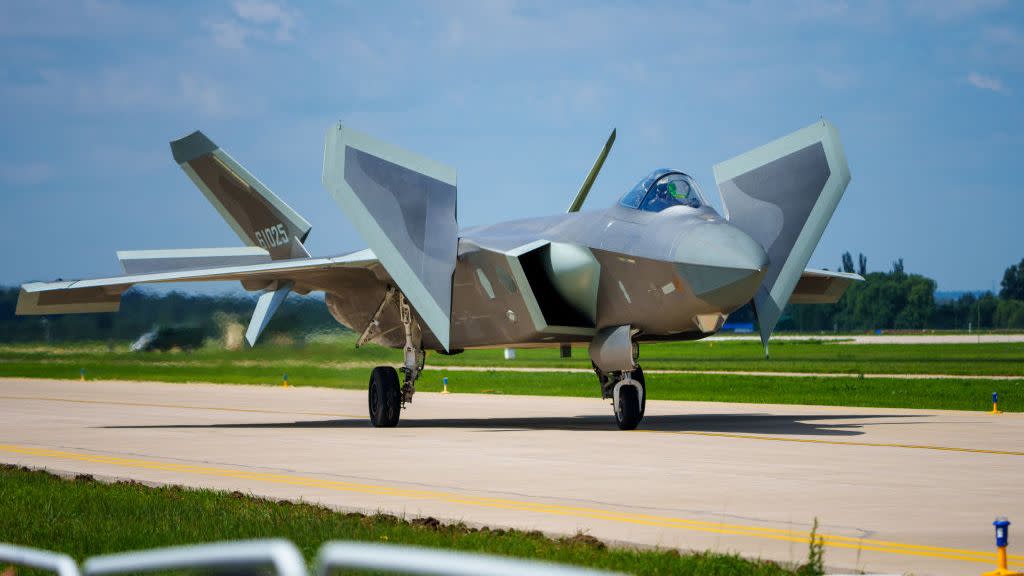
Yang Wei, the chief designer of China’s J-20 stealth fighter, gave a talk in October discussing the U.S.’s B-21 Raider stealth bomber, which made its first flight in November after being unveiled to the public a year ago.
His audience was at China’s Academy of Engineering Physics (CAEP)—also known as the 9th Institute—and the talk was a broad primer on the evolution of air warfare. It touched on the concept of jet fighter generations, the OODA decision-making loop, and so on.
Commentators have claimed that Yang dunked on the B-21, saying that it “couldn’t compare to us”—supposedly comparing it to the yet-to-be publicly unveiled H-20 stealth bomber, in development by the Xi’an Aircraft Corporation andalso believed to be a nuclear-capable flying wing.
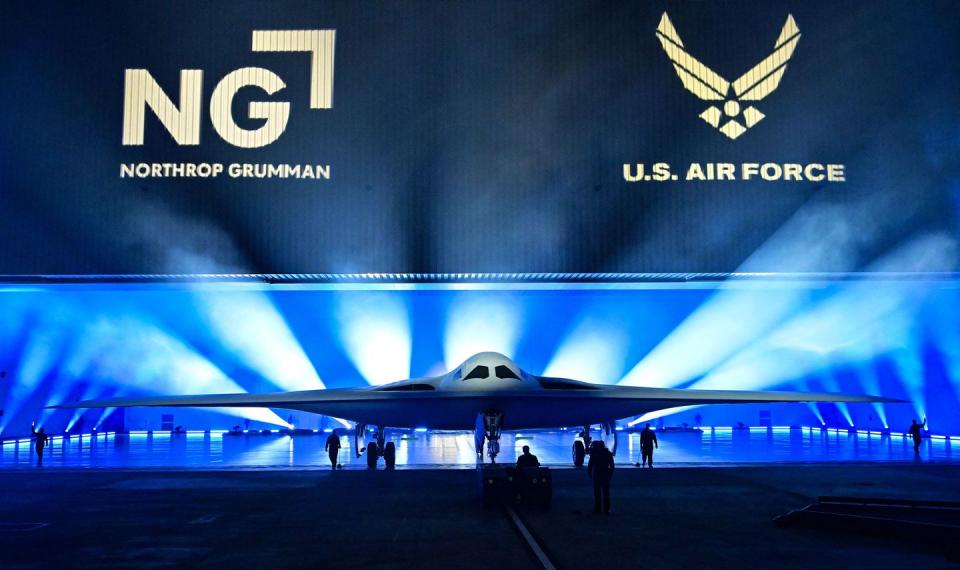
But here’s the remark’s full context: “When [the B-21] was advertised, it was said that it would be developed using digital engineering and its research and development speed would be fast. But in fact, the first flight has been delayed for three years, and I don’t think it can compare to us.”
Yang also put up slides with screenshots from old U.S. reports, noting how the B-21 would incorporate many already-developed components to reduces costs and R&D time to reinforce his point.
He was, therefore, comparing the speed of China’s military R&D cycles and adoption of digital tools (a technology he’s promoted as a senior director in China’s military aerospace industry) to that of the U.S. And in that comparison, he concluded that China could still develop new aircraft faster than the U.S. could.
This diss of the U.S. defense industry’s R&D and procurement processes isn’t exactly the “our plane is better than their plane” statement it’s been made out to be.
But the presentation’s actual bombshell came innocuously. Yang congratulated CAEP for celebrating its 65th anniversary, and noted that his organization—the Chengdu Aircraft Research & Design Institute, which does R&D for the Chengdu Aerospace Corporation (CAC or CAIG)—is now working closely with CAEP on a common project.
CAEP serves as China’s primary nuclear weapons research and development organization, and happens to be based close to Chengdu in Mianyang.
Perhaps his words could be dismissed as a bureaucrat’s niceties about closer inter-departmental cooperation. But it sure sounds like Yang is implying that CAEP and CAC are, at a minimum, jointly studying and consulting on the process of equipping Chengdu-built fighters with nuclear arms—a capability heretofore absent from China’s fighter fleet.
Why China hasn’t put nukes on fighters
Chinese nuclear doctrine has historically been focused on strategic weapons for defensive deterrence and retaliation—as opposed to those primarily developed for ‘tactical’ use and warfighting benefits. That includes a professed No-First Strike policy and a comparatively small nuclear arsenal (albeit one that has been rapidly growing in recent years).
Thus, while the U.S. Air Force deploys tactical nuclear gravity bombs on its multi-role fighters, China’s air-based nuclear deterrence has been based on H-6 strategic bombers—with the exception of a small number of specially modified Q-5 attack jets in play during the 1970-80s.
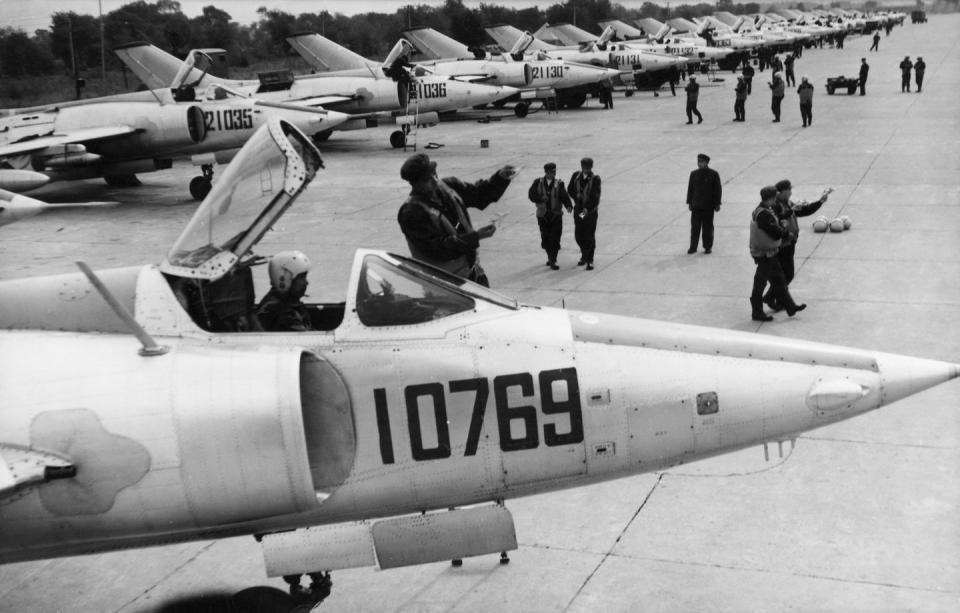
Even then, the PLA Air Force’s role in providing air-based nuclear deterrence is thought to have effectively lapsed for a period, before being resurrected around 2018. Currently, the 106th Bomber Brigade’s new H-6N bombers—armed with air-launched ballistic missiles—are though to constitute China’s air-based nuclear deterrence and offer a regional standoff strike capability extending a few thousand miles. These bombers, distinguished by their protruding air-refueling probes, must rely on the reach of their missiles. The bombers themselves are too slow and easily detected to get close to enemy air defenses and fighters.
空军轰6N挂载空射弹道导弹视频 pic.twitter.com/S4r03bcgK0
— lqy🇨🇳 (@lqy99021608) April 19, 2022
Andreas Rupprecht, an expert who has published several books on Chinese military aviation, wrote to PopMech that nuclear weapons “are under the control of the Central Military Commission and at least by what I know, no PLA Army Air Force base has the necessary infrastructure for nuclear weapons. Maybe at best, the 106th Bomber Brigade.”
Eventually, the H-20 should enter service and offer a longer-range penetrating strike capability. It should, theoretically, be stealthy enough to slip between air defenses and fly deeper into defended airspace, extending its reach considerably.
A nuclear-capable upgrade to China’s J-20 stealth fighter?
Perhaps the simplest rationale for a nuclear-armed J-20 is to give the PLAAF a regional penetrating nuclear-strike capability while it waits for the H-20 to enter service.
Though H-6Ns are a viable means to a nuclear-delivery end, their standoff strikes can be detected while inbound, and are susceptible to countermeasures. Having a secondary air-based nuclear platform with the range and stealth for penetrating strikes could confound defenses and increase the odds of successfully striking, say, U.S. bases in Guam or other relevant areas in the Western Pacific.
The J-20 is the most advanced fighter in PLAAF service. It’s also China’s only manned stealth jet, until the H-20 bomber and the lighter J-35 fighter enter service.
Though primarily an air superiority platform, the J-20 is also ground-attack capable, and its potential as a nuclear strike plane has been remarked upon by some analysts due to its substantial weapons and fuel capacity. Of course, the J-20’s potential to elude detection and perform penetrating strikes would be the key point in its favor.
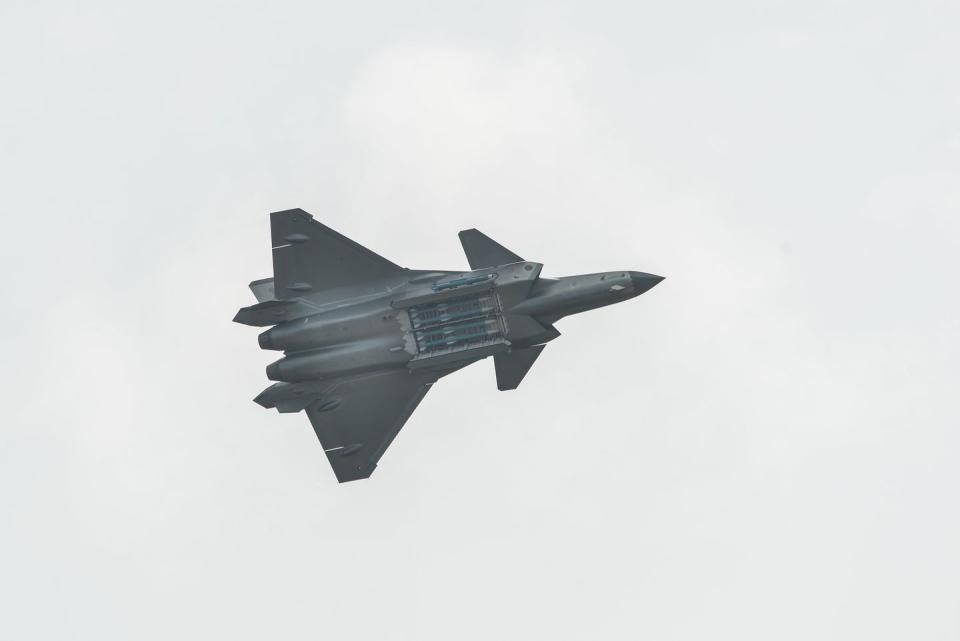
Admittedly, as a fighter first and foremost, the J-20 was designed with an emphasis on frontal-aspect stealth. As a trade-off, it has weaker side and rear-aspect stealth capabilities—a liability when flying on deep strikes that are potentially exposed to radars from those angles. But still, it’s probably more likely to successfully execute penetrating strikes than current non-stealth systems like the JH-7 fighter-bomber.
Modifying any plane for nuclear weapons requires the installation of special wiring. But a nuke for the J-20 would likely require the development of a new small nuclear missile or bomb that can fit inside the J-20’s internal weapons bay, as munitions carried underwing would increase its radar cross section.
Alternative possibilities: nuclear J-10 or JF-17?
CAC is involved in the production of two other military jets that could plausibly carry nuclear weapons: the JF-17 Thunder (for co-production with and use by Pakistan, and for export in small numbers to Nigeria and Myanmar) and the J-10 multi-role fighter. Both are short-range, non-stealth fighters unlikely to penetrate deeply into defended enemy airspace, and thus would primarily be useful for delivering strikes on targets near the frontline and border.
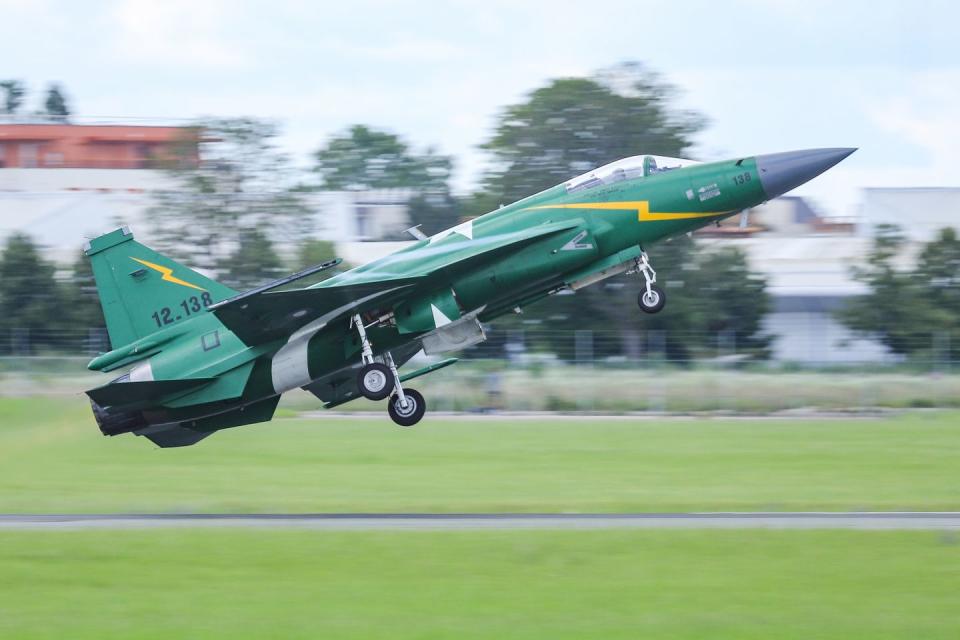
The U.S. does assign a tactical nuclear role to its F-16 jets, which are comparable to the J-10. But a more logical non-stealth candidate for that role would be China’s J-16 heavy fighter (built by the rival Shenyang Aircraft Corporation), which could carry a heavier nuclear payload over much greater distances than a J-10.
Again, though, ‘tactical’ nukes don’t fit with China’s known doctrine. But they do fit with Pakistan’s plans for the use of tactical nuclear weapons in a major ground war with India. And indeed, the JF-17 (which is co-produced in Pakistan) has been seen fitted with Ra’ad air-launched cruise missiles that could deliver nuclear attacks. It’s believed that the JF-17 has been anointed to take on the nuclear-strike role currently held by Pakistan’s aging, French-built Mirages III and V jets.
Wow, so a Pakistan Air Force JF-17 pulled up with a RA'AD Air Launched Cruise Missile. This subsonic ALCM has a claimed range of >500 km.
Photo credits to owner pic.twitter.com/k9ZFZIjcEz— Rishav Gupta (ऋषव गुप्ता) | 🇮🇳🦇 (@_devildog_rv_) March 19, 2023
Furthermore, a recent model suggests that a new-generation Taimoor missile is being considered for fitting on the JF-17.
Interesting and surprising image found 😮... A model of a PAF JF-17 carrying some sort of "new" ALCM, and as it seems it is the TAIMOOR, which was formerly known as the RA'AD II.
(Images via the PDF) pic.twitter.com/x4Q8aicdik— @Rupprecht_A (@RupprechtDeino) November 22, 2022
But while Pakistan is clearly exploring a nuclear role for the JF-17, the extent to which Chinese support is involved or necessary is debatable. Nuclear capabilities are so sensitive, it’s likely Pakistan would have to handle the nuclear-wiring of JF-17s on its own—something it likely can do, given numerous other nuclear arms fielded by Islamabad.
A new aircraft with a nuclear role?
Yang’s remark could also have been referring to the studying of nuclear capability for an entirely new and heretofore unknown bomber, drone, or sixth-generation fighter under development by the Chengdu Aircraft Corporation.
Earlier in 2023, China’s AVIC conglomerate showed concept art of a tailless sixth-generation fighter that could succeed the J-20. Furthermore, satellite photos revealed a curious tailless aircraft mockup (or demonstrator) at CAC’s institute 611 research facility.
Known since October 2021 on satellite images, this is suggested to be a (full)? scale mockup or even a 6. generation technology demonstrator built by 611 Institute/CAC featuring a tailless diamond wing configuration.
And today this... Just a CG or indeed the rumoured testbed? pic.twitter.com/7TgbApYBDz— @Rupprecht_A (@RupprechtDeino) January 18, 2023
A tailless design could improve all-aspect stealth, making such a plane into a much better penetrating bomber.
A new strike platform would not need to be manned—a drone could be developed faster and more inexpensively. The U.S.’s mysterious RQ-180 drone, for instance, is believed to be a flying wing with a potential nuclear role.
A drone could also be controlled remotely via a two-seat fighter to perform the high-risk penetration part of a nuclear strike mission. And indeed, China is reportedly upgrading its two-seat J-20S fighter for this capability, known as manned-unmanned teaming (MUM-T). But again, a nuclear role for such drones would be a stretch beyond current practices.
All in all, it’s important to remember that Beijing hasn’t historically placed as much importance on tactical nuclear strikes as Russia or the U.S. Of course, however, policies can change abruptly, as was observed with China’s surge in nuclear missile silo construction detected in 2021. The past does not always reveal the future.
You Might Also Like

